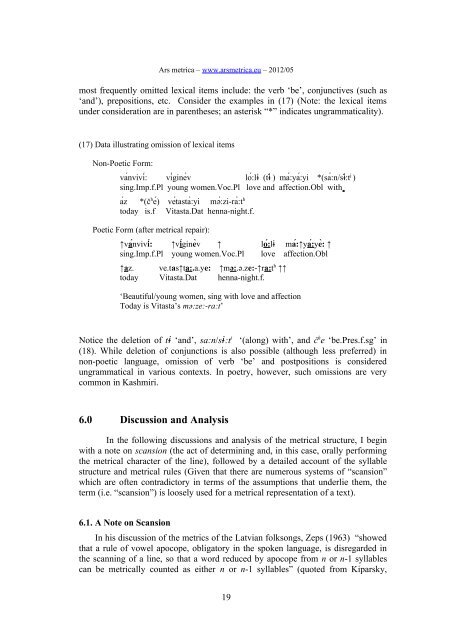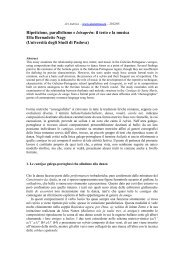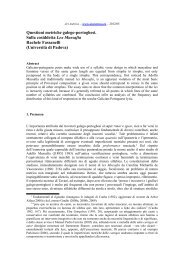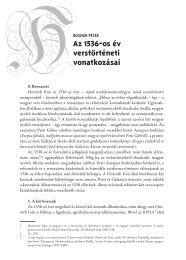The Metrical Structure of Kashmiri Vanɨvun Sadaf ... - Ars Metrica
The Metrical Structure of Kashmiri Vanɨvun Sadaf ... - Ars Metrica
The Metrical Structure of Kashmiri Vanɨvun Sadaf ... - Ars Metrica
Create successful ePaper yourself
Turn your PDF publications into a flip-book with our unique Google optimized e-Paper software.
<strong>Ars</strong> metrica – www.arsmetrica.eu – 2012/05<br />
most frequently omitted lexical items include: the verb ‘be’, conjunctives (such as<br />
‘and’), prepositions, etc. Consider the examples in (17) (Note: the lexical items<br />
under consideration are in parentheses; an asterisk “*” indicates ungrammaticality).<br />
(17) Data illustrating omission <strong>of</strong> lexical items<br />
Non-Poetic Form:<br />
vańviví: víginèv ló:lɨ (tɨ́ ) má:yá:yi *(sá:n/sɨ́:t j )<br />
sing.Imp.f.Pl young women.Voc.Pl love and affection.Obl with<br />
áz *(č h é) vétastà:yi mə́:zi-rà:t h<br />
today is.f Vitasta.Dat henna-night.f.<br />
Poetic Form (after metrical repair):<br />
↑vańviví: ↑víginèv ↑ ló:lɨ má:↑yá:yè: ↑<br />
sing.Imp.f.Pl young women.Voc.Pl love affection.Obl<br />
↑az. ve.tas↑ta:.a.ye: ↑mə:.ə.ze:-↑ra:t h ↑↑<br />
today Vitasta.Dat henna-night.f.<br />
‘Beautiful/young women, sing with love and affection<br />
Today is Vitasta’s mə:ze:-ra:t’<br />
Notice the deletion <strong>of</strong> tɨ ‘and’, sa:n/sɨ:t j ‘(along) with’, and č h e ‘be.Pres.f.sg’ in<br />
(18). While deletion <strong>of</strong> conjunctions is also possible (although less preferred) in<br />
non-poetic language, omission <strong>of</strong> verb ‘be’ and postpositions is considered<br />
ungrammatical in various contexts. In poetry, however, such omissions are very<br />
common in <strong>Kashmiri</strong>.<br />
6.0 Discussion and Analysis<br />
In the following discussions and analysis <strong>of</strong> the metrical structure, I begin<br />
with a note on scansion (the act <strong>of</strong> determining and, in this case, orally performing<br />
the metrical character <strong>of</strong> the line), followed by a detailed account <strong>of</strong> the syllable<br />
structure and metrical rules (Given that there are numerous systems <strong>of</strong> “scansion”<br />
which are <strong>of</strong>ten contradictory in terms <strong>of</strong> the assumptions that underlie them, the<br />
term (i.e. “scansion”) is loosely used for a metrical representation <strong>of</strong> a text).<br />
6.1. A Note on Scansion<br />
In his discussion <strong>of</strong> the metrics <strong>of</strong> the Latvian folksongs, Zeps (1963) “showed<br />
that a rule <strong>of</strong> vowel apocope, obligatory in the spoken language, is disregarded in<br />
the scanning <strong>of</strong> a line, so that a word reduced by apocope from n or n-1 syllables<br />
can be metrically counted as either n or n-1 syllables” (quoted from Kiparsky,<br />
19







